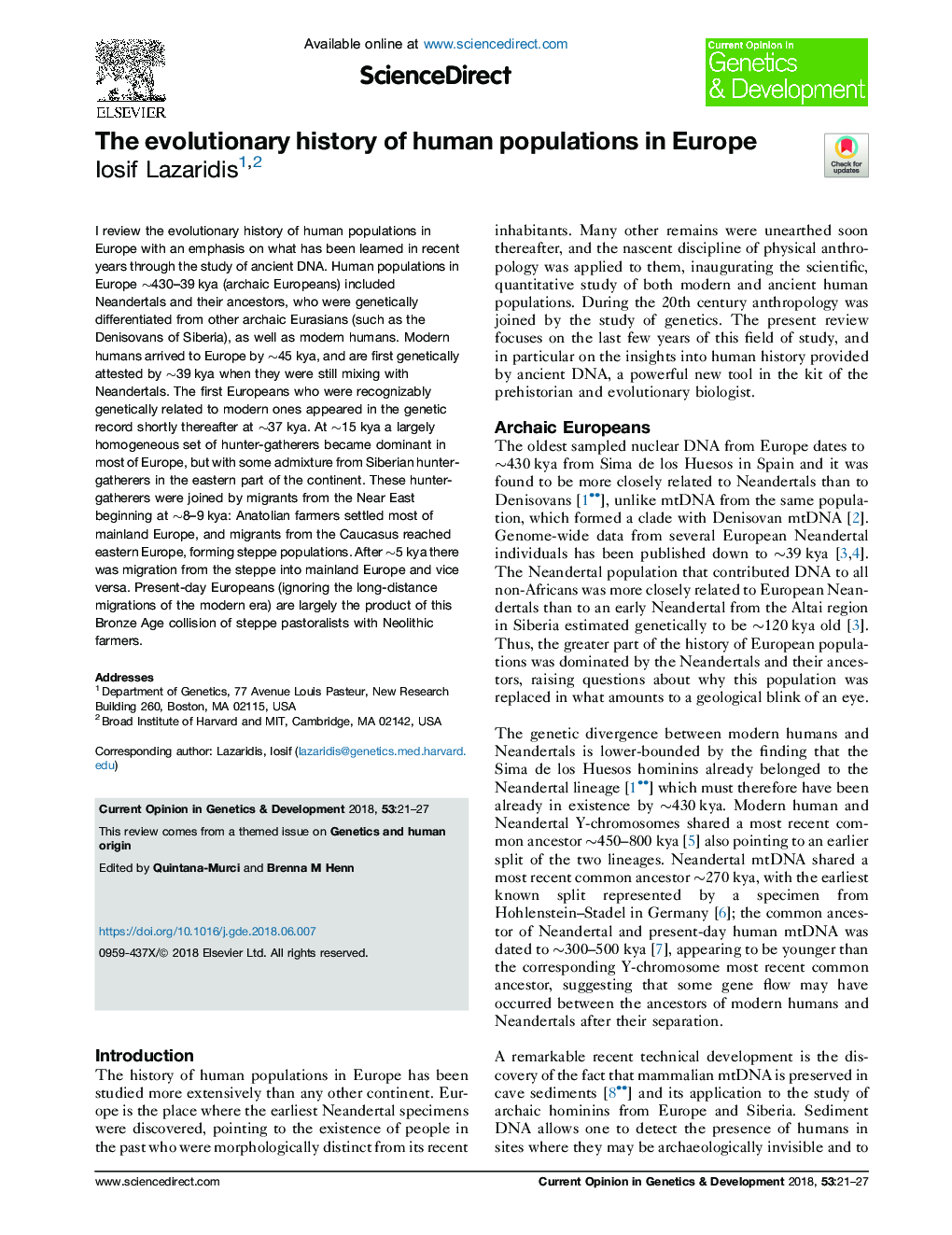| Article ID | Journal | Published Year | Pages | File Type |
|---|---|---|---|---|
| 8625601 | Current Opinion in Genetics & Development | 2018 | 7 Pages |
Abstract
I review the evolutionary history of human populations in Europe with an emphasis on what has been learned in recent years through the study of ancient DNA. Human populations in Europe â¼430-39Â kya (archaic Europeans) included Neandertals and their ancestors, who were genetically differentiated from other archaic Eurasians (such as the Denisovans of Siberia), as well as modern humans. Modern humans arrived to Europe by â¼45Â kya, and are first genetically attested by â¼39Â kya when they were still mixing with Neandertals. The first Europeans who were recognizably genetically related to modern ones appeared in the genetic record shortly thereafter at â¼37Â kya. At â¼15Â kya a largely homogeneous set of hunter-gatherers became dominant in most of Europe, but with some admixture from Siberian hunter-gatherers in the eastern part of the continent. These hunter-gatherers were joined by migrants from the Near East beginning at â¼8-9Â kya: Anatolian farmers settled most of mainland Europe, and migrants from the Caucasus reached eastern Europe, forming steppe populations. After â¼5Â kya there was migration from the steppe into mainland Europe and vice versa. Present-day Europeans (ignoring the long-distance migrations of the modern era) are largely the product of this Bronze Age collision of steppe pastoralists with Neolithic farmers.
Related Topics
Life Sciences
Biochemistry, Genetics and Molecular Biology
Developmental Biology
Authors
Iosif Lazaridis,
